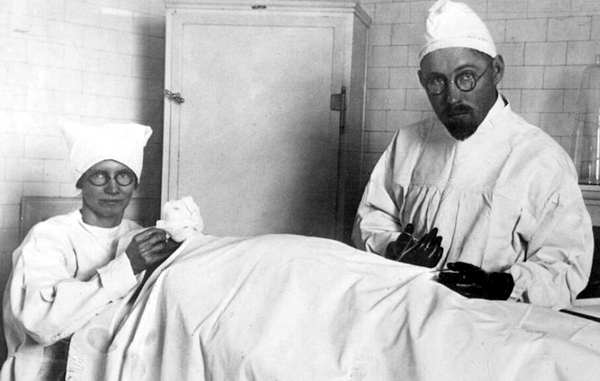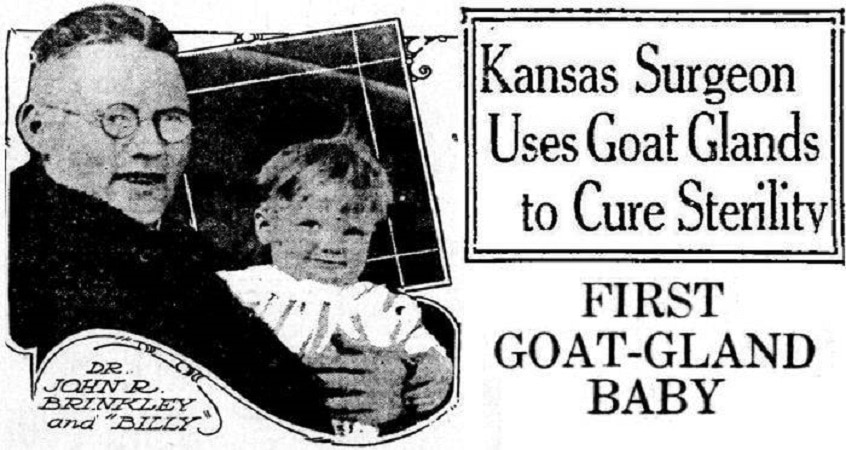
ADVERTISEMENT - CONTINUE READING BELOW
When Goat and Monkey Testicle Transplants Were All the Rage
The patient claimed that all was well with his manhood, and Brinkley publicized the operation’s success. Soon, Brinkley was performing 100 transplants a week, at $750 (about $13,000 in 2023 dollars) per. The crude procedure simply placed goat gonads within a man’s testicle sac, and the patient’s body typically absorbed the goat tissue. The operation had no impact whatsoever on the patients’ reproductive health. But many convinced themselves – or at least tried to convince others – that they were now as virile as goats. Those who were not were too embarrassed to open themselves to ridicule, for failing to get it up even with goat balls. Brinkley’s procedure became so popular, that his schedule became jam packed. Patients even brought their own goats, personally selected by them after observing their prowess, to implant their gonads in their testes.

ADVERTISEMENT - CONTINUE READING BELOW
Many patients became infected, and some died – Brinkley’s surgery was poorly sterilized, and he often operated drunk. However, his popularity grew steadily. It increased after he put on a show for the press in 1920, in which he performed 34 goat testicle transplants. The press and public ate it up. He hired an advertising agent, who coined the phrase that Brinkley’s procedure turned hapless men into “The ram that am with every lamb“. Brinkley was actually not unique back then: he had a rival, who specialized in transplanting monkey testicles into men. However, goat gonads caught on more than monkey parts. As Brinkley’s fame grew, he widened the list of ailments cured by his procedure to include flatulence, dementia, and cancer. By 1922, he was a celebrity, and travelled to LA to perform a transplant on a Los Angeles Times editor.

